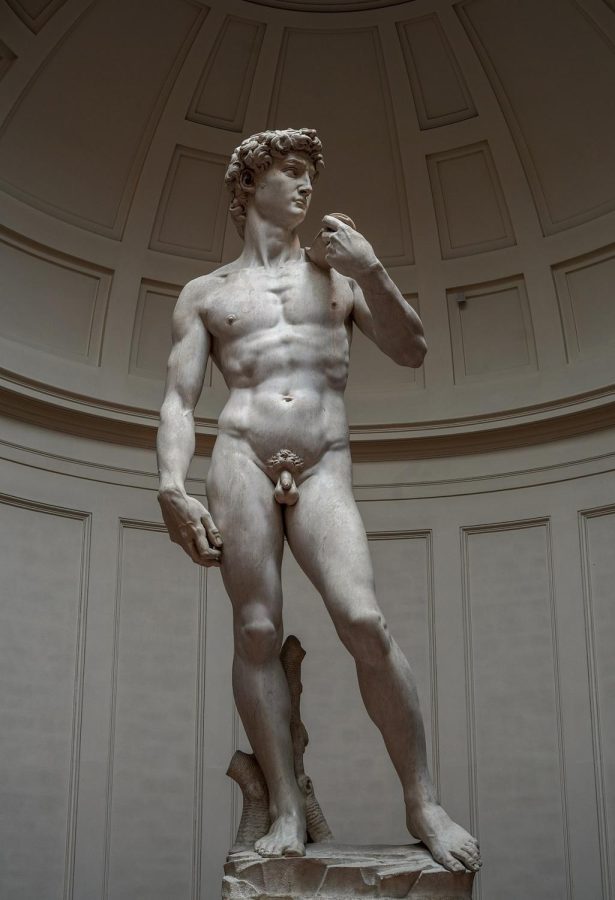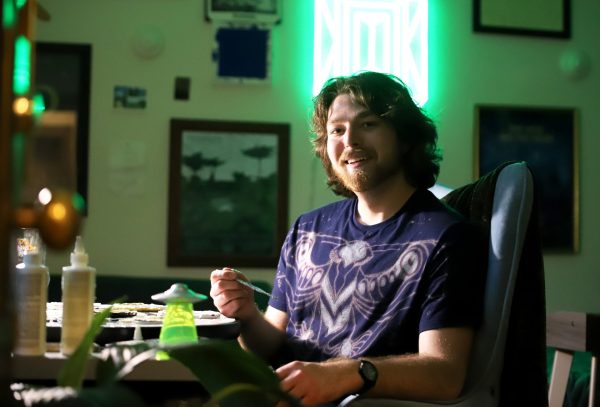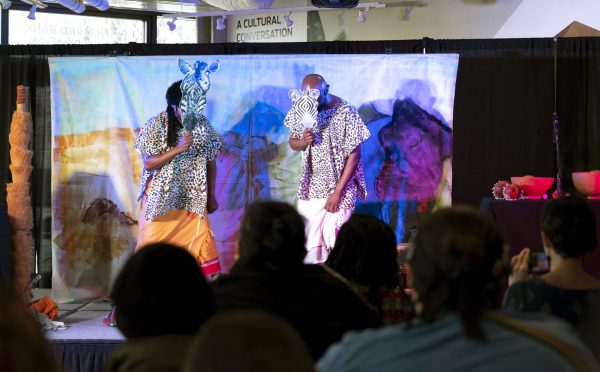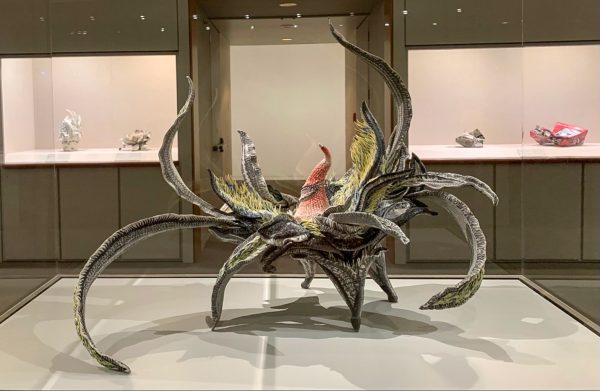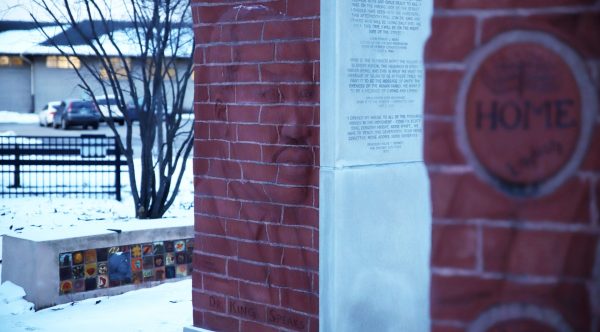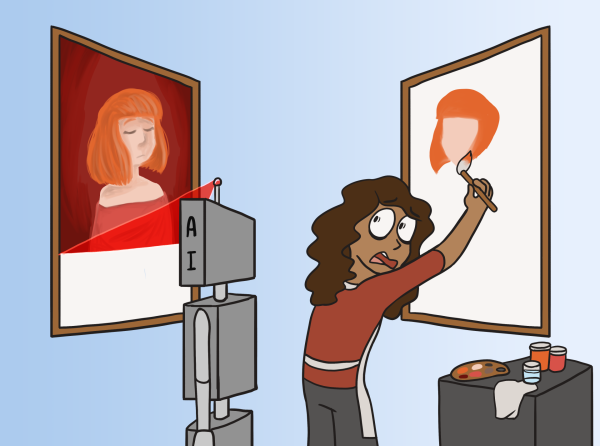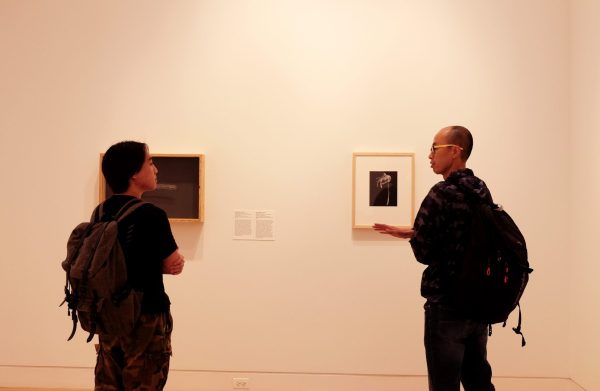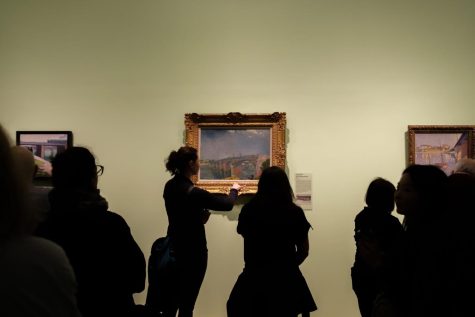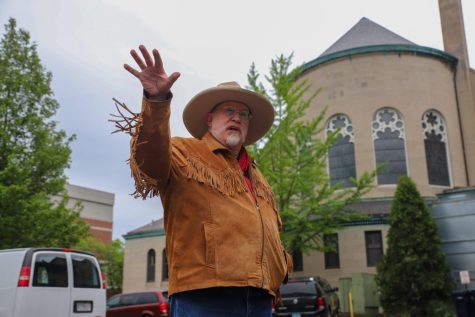‘I think parents should have a lot less to say:’ Michelangelo’s ‘David’ incites controversy about parental rights
Michelangelo’s “David” stands uncensored at the Galleria dell’Academia. Recently controversy has befallen the statue in light of parental right debates.
On Sept. 8, 1504, Italian sculptor Michelangelo Buonarroti unveiled his over 12,000-pound marble statue “David,” based on the biblical hero who defeated the giant Goliath. For nearly 400 years, locals and tourists alike marveled at the 17-foot-tall sculptor in Florence, Italy’s Piazza della Signoria, before being permanently relocated inside Galleria dell’Accademia.
Although considered by many art historians to be the climax of Renaissance art — a period defined by humanism philosophy and a naturalistic manner — controversy has hounded “David” since its creation.
Yet, before Tallahassee Classical School Principal Hope Carrasquilla resigned after parents deemed a Renaissance art lesson that featured a photograph of the historic statue “pornographic” and before the Vatican launched a campaign to clothe “David,” the creation faced a tense political and cultural attitude.
“David was both a religious symbol and political symbol,” said DePaul history professor Karen Scott. “David was the young boy who slayed the giant, and so he represented the underdogs who fight off really aggressive enemies successfully, and the city of Florence thought of itself that way.”
Following the Medici family’s decadelong exile from Florence to Rome due to a decline in power, an anti-Medici Republican had settled in their absence. Despite the Medici backing of Michelangelo’s early career, “David’s” placement — with his gaze facing Rome and arm poised to cast a stone toward the Medician Goliath if required — has been classified as anti-Medici sentiment.
However, the statues’ unabashed nudity has always been its strongest point of contention, garnering backlash from artists such as Leonardo Da Vinci, who suggested it be given a loin cloth, and leaving many Florentines offended by the sculptor’s nakedness. Following the statue’s assemblage, the Catholic Church obliged Michelangelo to bind a garland of 28 copper leaves around “David’s” waist until the wreath’s quiet removal in 1550.
“By the end of the 1500s and by the end of the 16th century, there was really a different atmosphere in Europe,” Scott said. “After the Protestant Reformation and Puritanism developing in Protestant circles, it also developed in Catholic circles, a kind of prudishness that was very different from what had been the case in previous centuries.”
Still, in the years since the creation of “David,” the West has remained divided on what ideologies and messages to teach in the classroom.
Barney Bishop III, the chair of Tallahassee Classical School, stated that the complication with the Renaissance lesson was not the nudity but the administration’s failure to comply with the board’s policy. He said that the school should have notified parents so they could request a different lesson if they felt “David” was too inappropriate for the sixth-grade class.
“I can understand [parents’ reaction] but as a historian, I know why it was made this way and how it is intended to be viewed,” Scott said. “But we today look at art with our own eyes and our own historically conditioned culture today. So indeed, for some people it’s going to appear pornographic.”
Still, the question of whether or not parental opinions belong in the classroom remains unclear.
“I can understand the choice to reaffirm parental rights,” said Isabel Kampfner, DePaul senior and art history and architecture major. “However, I believe censoring art in schools will create more ignorant people who will then impose their ignorance onto their children, which begs the question, if it begins, will it ever end?”
Adopting the Hillsdale curriculum — which emphasizes ideals of American exceptionalism and patriotism — the charter school says it will continue to show the image. However, many, like Kampfner, worry about how parents’ and states’ growing moral constraints will affect the education curriculum.
“As an art history student, I have obviously come into contact with images that contain genitalia and things that are sexual in nature, but it is not a common occurrence and it is not something that is talked about at length or robustly in every class,” Kampfner said. “Instead, we look deeper into historical aspects and how artistic choices are representing the styles and sociocultural trends at the time.”
University of Chicago art history professor Niall Atkinson expressed the importance of understanding the anthropological framework that coincides with a piece of art.
“Because these monuments are so normalized into our cultural heritage, we forget the kinds of stories from which they come,” Atkinson said. “You have to contextualize them, to show how art has played a role in the beautification and apology for certain forms of socially sanctioned violence, particularly against women.”
The Tallahassee Classic School is not the first in Florida to restrict what materials students can and cannot learn. In February, Gov. Ron DeSantis announced plans to prevent state colleges from implementing diversity, equity, inclusion and critical race theory programs.
“If we’re going to get into issues like censorship, then I think parents should have a lot less to say,” Atkinson said. “I think we should trust libraries in school to know what is valuable and what is not and to err on the side of tolerance.”
Following the incident, the Florence Museum housing “David” invited parents and charter school students to visit the statue in person. Additionally, the city’s mayor Dario Nardella tweeted an invitation to Carrasquilla to honor her personally.


